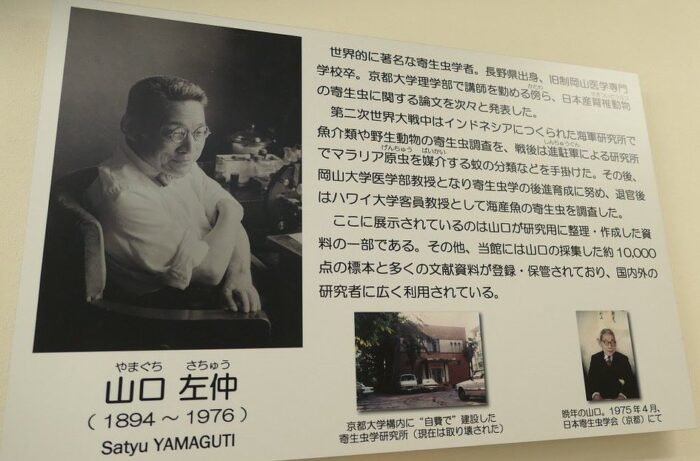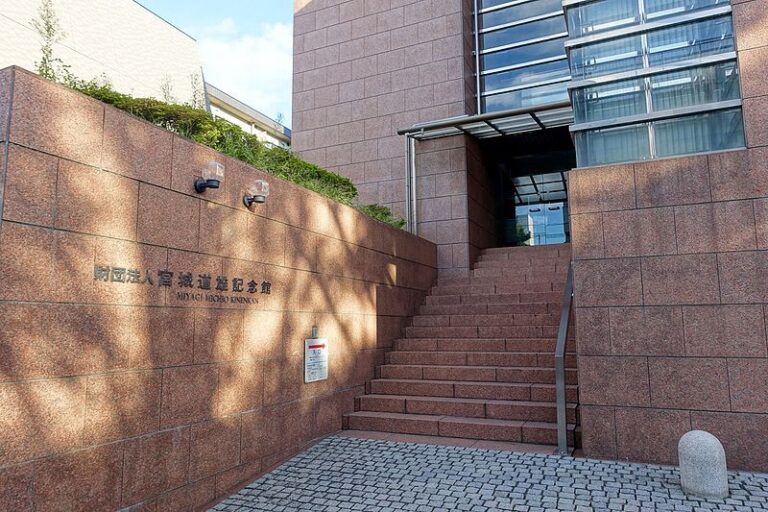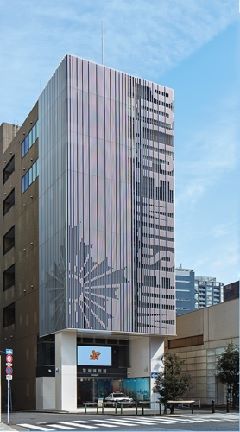Another distinguished member of the strange but fascinating Tokyo museum club is The Meguro Parasitological Museum, located, were else but in Meguro Ward Tokyo. This a unique museum dedicated to the study of parasites and the science of parasitology.

Founded in 1953 by Dr. Satoru Kamegai, the museum houses a collection of over 60,000 parasite specimens, making it one of the largest collections of its kind in the world.
The museum gives you a fascinating glimpse into the world of parasites and their impact on human and animal health. Visitors can view a wide variety of specimens, including tapeworms, lice, fleas, and other parasites, and learn about their life cycles, habitats, and the diseases they cause.
 The museum also features interactive exhibits, educational videos, and a library of books and scientific journals on parasitology.
The museum also features interactive exhibits, educational videos, and a library of books and scientific journals on parasitology.
Key Takeaways
- The Meguro Parasitological Museum is located in the Meguro Ward in central Tokyo.
- Houses a collection of over 60,000 parasite specimens.
- Specimens include tapeworms, lice, fleas, and other parasites (Yep, all the good stuff).
- Founded in 1953 by Dr. Satoru Kamegai.
- Open from 10:00 a.m. to 5:00 p.m.
- Closed on Mondays and Tuesdays, as well as on New Year’s holidays.
- Admission to the museum is free, but donations are welcome.
- The perfect prelude to a sushi dinner!
History

The Meguro Parasitological Museum was founded in 1953 by Dr. Satoru Kamegai, a medical doctor with a passion for parasitology. The museum was initially located in the Institute of Infectious Diseases of the University of Tokyo, but it was later moved to its present location in the Meguro Ward in central Tokyo in 1993.
The museum is the only one of its kind in Japan and is dedicated to the study of parasites and the science of parasitology.

The museum’s collection includes over 60,000 parasite specimens, including a variety of nematodes, trematodes, and malaria parasites, as well as other related materials.
The museum’s prize attraction is the world’s longest tapeworm, measuring 8.8 meters in length, which is accompanied by a video of its extraction from a patient’s body.

Exhibits
The Museum is home to an impressive collection of over 60,000 parasite specimens, making it the world’s only museum dedicated to parasites. The exhibits are divided into two floors, with the first floor focusing on human parasites and the second-floor showcasing parasites from other animals.
On the first floor, you’ll find a variety of specimens, including preserved tapeworms, leeches, and roundworms. One of the most popular exhibits is the “human parasite life cycle” display, which shows the life cycles of several common human parasites, including the hookworm and the liver fluke.
The second floor of the museum features exhibits on parasites from animals such as fish, birds, and insects. One of the most fascinating exhibits is the preserved giant isopod, a deep-sea crustacean that can grow up to two feet long.
In addition to the exhibits, the museum also has a library with over 5,000 books and scientific journals on parasites, as well as a gift shop where you can purchase parasite-themed souvenirs and books.

Note that some of the exhibits may not be suitable for young children or those with a weak stomach, as they can be quite graphic. However, if you have an interest in biology or are simply looking for a unique and educational experience, the Meguro Parasitological Museum is definitely worth a visit.
Research

If you’re interested in the science of parasitology, the Meguro Parasitological Museum should be on your to-do list. The museum is a private research facility that was established in 1953 with the private funds of a medical doctor, Satoru Kamegai.
The exhibits include about 300 parasite specimens and related material, including models and interactive displays that help to explain complex concepts.
One of the highlights of the museum is the world’s longest tapeworm, measuring 8.8 meters in length. This specimen is sure to captivate your attention and spark your curiosity about the world of parasites.
The museum is open from 10:00 a.m. to 5:00 p.m. and is closed on Mondays and Tuesdays. However, if a national holiday falls on Monday or Tuesday, the museum is open that day but closed on the following weekday.
Admission to the museum is free, making it an accessible and educational destination for locals and visitors alike.
Visiting Information

If you’re planning a visit to the Meguro Parasitological Museum, here are a few things you should know:
| Hours | 10:00 a.m. to 5:00 p.m. |
|---|---|
| Closed | Mondays and Tuesdays (When a national holiday falls on Monday or Tuesday, the museum is open, but closed on the following weekday.) Also closed on New Year’s holidays |
| Admission Fee | Free (Donations are welcome) |
The museum is located in Tokyo, Japan, and can be accessed via public transportation.
While the museum may not be for everyone, it’s a unique and educational experience that locals and tourists alike can appreciate. Whether you’re interested in the science behind parasites or simply want to see the world’s longest tapeworm, the Meguro Parasitological Museum is definitely worth a visit.
Conclusion
After your visit, you’ll have plenty of things to brag to your friends about. You’ll have seen a wide variety of parasite specimens, including the world’s longest tapeworm, and learned about their life cycles, habitats, and effects on their hosts.
You have also gained insight into the history and development of parasitology as a scientific discipline, and the ongoing research and discoveries in this field.
As you leave the museum, you may feel a mix of emotions, ranging from awe and wonder to disgust and discomfort. But one thing is for sure, you have gained a new appreciation for the diversity and complexity of the natural world, and the intricate relationships between different species.
You may also want to consider purchasing some souvenirs from the gift shop, such as books, postcards, or plush toys of your favorite parasites.
Overall, the Meguro Parasitological Museum should be on your to do list for anyone interested in biology, medicine, or just curious about the weird and wonderful creatures that inhabit our planet. Whether you are a local or a visitor, young or old, there is Something to interest all at this unique and captivating museum
Directions
To reach the Meguro Parasitological Museum via public transportation, follow these directions:
- Take the JR Yamanote Line or the Tokyo Metro Namboku Line to Meguro Station.
- Exit the station from the West Exit.
- Walk for about 15 minutes or take the Tokyu bus bound for “東山女子学園前 (Higashiyama Joshi Gakuen-mae)” and get off at the “目黒寄生虫館前 (Meguro Kiseichūkan-mae)” bus stop. The museum is just a short walk from the bus stop.
Alternatively, you can take a taxi from Meguro Station to the museum, which will take around 5 minutes depending on traffic.
Visitor Details
| Information | Details |
|---|---|
| Name | Meguro Parasitological Museum (目黒寄生虫館) |
| Ticket Cost | Free (donations appreciated) |
| Opening Times | Tuesday – Sunday: 10:00 – 17:00 |
| Closed on Mondays and national holidays | |
| Nearby Hotels | |
| Luxury | The Westin Tokyo – 1.9 km |
| Sheraton Miyako Hotel Tokyo – 1.4 km | |
| Mid-range | Claska – 2.5 km |
| Tokyu Stay Meguro Yutenji – 1.3 km | |
| Budget | HOTEL MYSTAYS Gotanda Station – 2.1 km |
| Sakura Hotel Nippori – 2.2 km |






